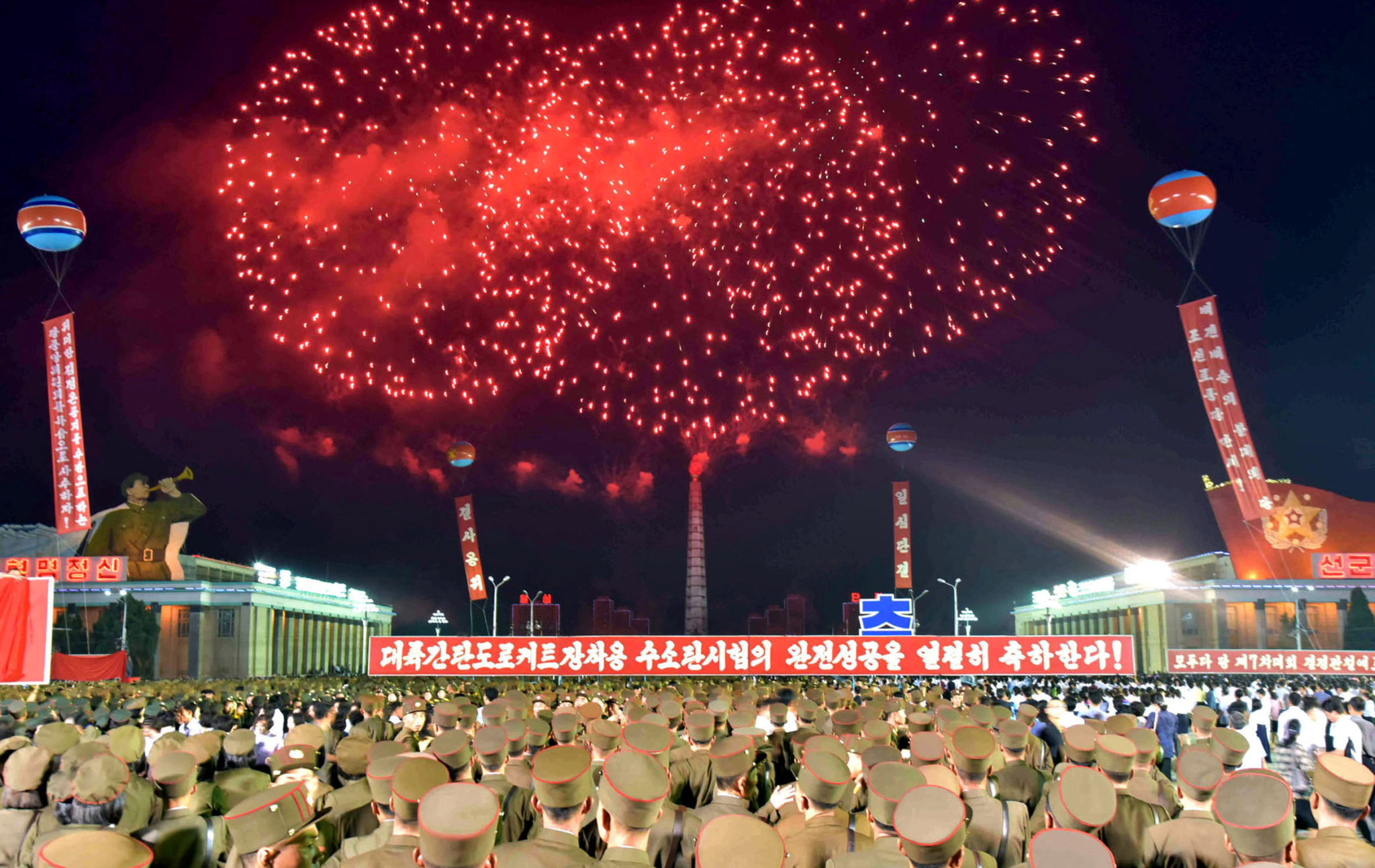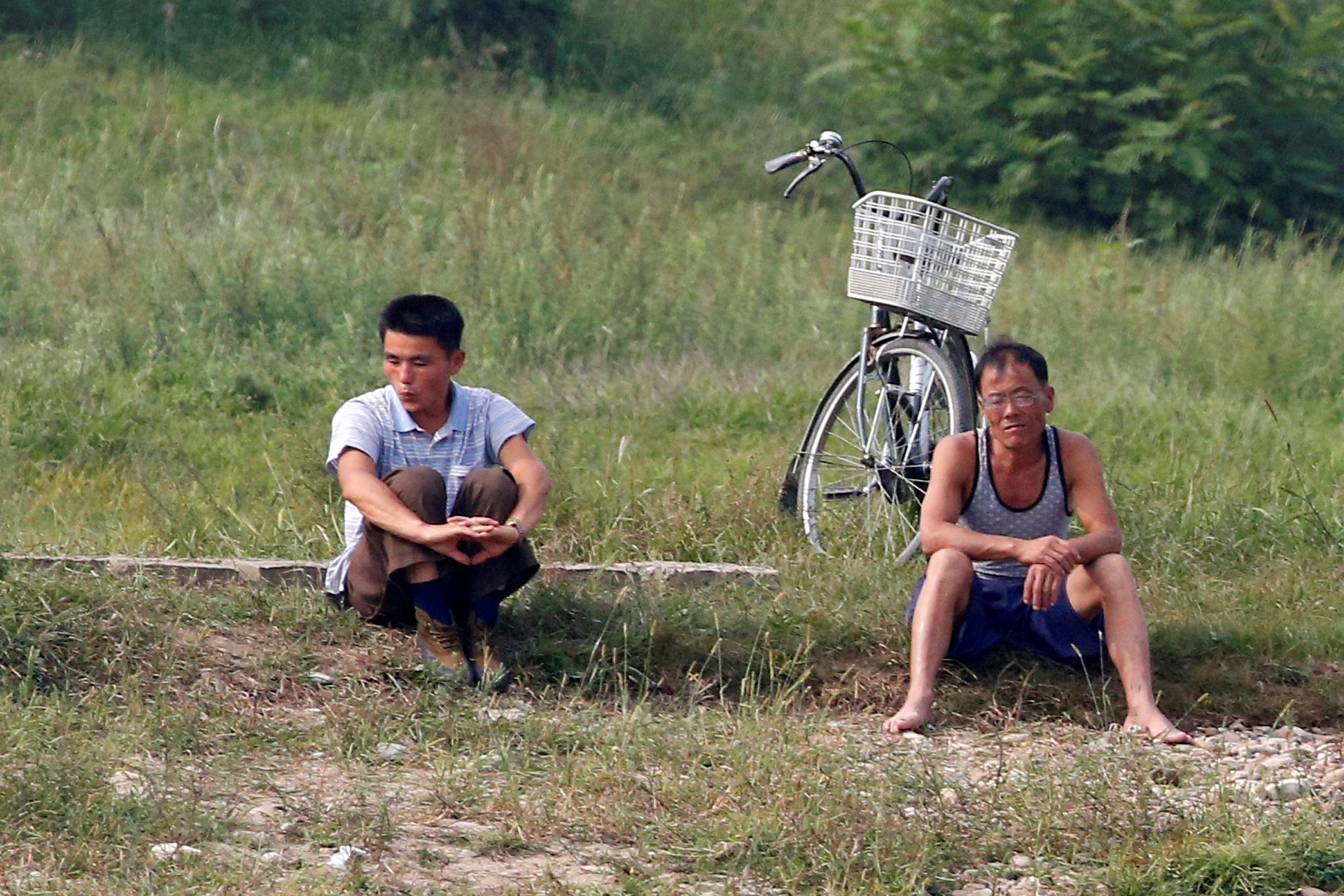For many young North Korean students, rehearsing for one of the country’s famously choreographed parades is almost a rite of passage. So when longtime North Korea aid worker Katharina Zellweger walked along Pyongyang’s Kim Il Sung Square this past spring and observed a group of students in rehearsal, it looked pretty routine.
But then the students disbanded for lunch, and they did something that would have been unthinkable just a few years ago: They whipped out their cellphones. And like other teenagers around the world, with heads bowed and eyes glazed, they started texting and snapping photos.
Videos by VICE
“It was like anywhere else,” she recalled. “Boys and girls, all on their mobile phones.”
For Zellweger, the episode reflected just how much North Korea has evolved from a place where toothpaste and soap had been luxuries not so long ago.
“They are going seriously capitalist.”
This change has paralleled Kim Jong Un’s rise and consolidation of power over the past five years. His defiant display of nuclear advancements in the face of constant international condemnation, and his brazen assassinations of both his uncle and half-brother, have revealed a young despot far more cruel and clever than his father Kim Jong Il ever was.
But in tandem with these hard lines, observers say, he’s also adopted an unexpectedly pro-market economic strategy, and the Hermit Kingdom has never looked more like a normal country. Despite the apparent dissonance, Kim’s nuclear program and economic agenda are actually two components of a single policy, dubbed the “byungjin line”: Becoming a true nuclear power assures North Korea an untouchable status, and economic prosperity ensures that the country’s elites and emerging consumer class won’t turn against him.
“They are going seriously capitalist,” said Andrei Lankov, a North Korea expert at Seoul’s Kookmin University and director of the Korea Risk Group. Lankov has called Kim Jong Un the most pro-market leader North Korea has ever had.
Over the past few years, Kim has enacted a series of modest reforms that may seem slight to an outside observer, but in a repressive country like North Korea they’re near revolutionary.
“When I lived in Pyongyang in 2009, most of the city was dark by night. When I visited last year, I was amazed by the lights everywhere.”
Factory managers now have the authority to set wages, which has led to salary increases from an average of $1 a month just a few years ago to as much as $120 a month for some workers. That’s dreadful by global standards but a boon for many North Koreans. In the last years of Kim Jong Il’s rule, illegal markets where people could buy, sell, and barter goods started popping up in response to the dysfunctional state economy. They operated in constant peril of being shut down by authorities, but Kim Jong Un appears to tolerate them, and the number of now authorized markets has more than doubled under his leadership.
The result is that across the country — and especially in Pyongyang — a growing number of people no longer lead the strict, spartan lives outsiders associate with the famine that happened 20 years ago.

Life remains difficult for most North Koreans, but in the capital socialism’s monochromatic clothes are being replaced with more fashionable outfits. Many women now walk in heels, carry handbags, and wear jewelry. Men gather at beer gardens after work. Families head out on weekends to swimming pools, cafes, and spas. There is even an equestrian center. The world mocked Kim Jong Un’s construction of a dolphin aquarium as an excessive vanity project while his people starved, but ask the locals, as Zellweger did, and excited North Koreans will tell you what a relief it is they now have so many activities to take their children to.
“If I were to read the news, I would think that every woman and child in North Korea is making nuclear weapons. But they are nice people — just like us. They want to enjoy life,” said Dr. Nagi Shafik, a public health specialist whose first trip to North Korea was in 2001 for UNICEF. “When I lived in Pyongyang in 2009, most of the city was dark by night. When I visited last year, I was amazed by the lights everywhere.”
Read more: Trump doesn’t have enough diplomats to deal with North Korea
Kim Jong Un can take some credit for these changes, but it’s also a result of North Koreans learning from the devastating famine of the 1990s, when at least 1 million people died. The state stopped providing regular rations during the famine, and never fully resumed the program. From that brutal period, a scrappy generation of North Koreans with no expectations for handouts emerged.
“They know they have to fend for themselves,” said Zellweger. “There are 25 million people in North Korea who just happened to be born into that system. And they have to make a living. This factor will play more and more into the way the country develops.”
Having suffered so long and worked so hard to enjoy some basic modern conveniences, this entrepreneurial class has a growing interest in stability and therefore a stake in Kim Jong Un’s rule. Keeping them happy has become a priority for the regime. Kim has added an extra year of primary school education, a considerable expense for any government. Public health, while still well short of international standards, has improved. He has also allowed for an explosion of leisure facilities and infrastructure projects, including the recent unveiling of a commercial thoroughfare in Pyongyang with shops and restaurants.
“This isn’t the traditional playbook of a third-generation leader, recklessly squandering wealth and power.”
Simon Cockerell, who just wrapped up his 165th trip to North Korea for Koryo Tours, said the emergence of the middle class has been the biggest change to the country. “It shows a level of aspiration that wasn’t really possible some years ago. Consumerism in Pyongyang has become more socially acceptable and visible.”
The overwhelming majority of North Koreans continue to live in poverty. But experts like Lankov, who has studied the country since the 1980s, say standards have improved across the board, and not just for those at the top. A poor North Korean 20 years ago faced death by starvation. Now, the circumstance is less urgent. “If you are poor it means that you cannot afford to eat pork — but maybe you get a slice of fish every weekend,” said Lankov.

For Kim Jong Un, these changes have been his best and only chance at long-term survival as he moves beyond his father’s worn tactic of trading the country’s nuclear progress for food and oil. His economic drive appears aimed not only to benefit political elites, but ordinary citizens, namely the country’s emerging middle class. The more people across all strata see progress, the greater the chance his third-generation dictatorship endures.
“Until a few years ago, the majority of North Koreans I spoke to were suspicious and skeptical. He looked too young, he was completely unknown,” said Lankov. “But he has become quite popular because the economy is growing and life is getting better.”
Kim has paired his economic policy with a severe police state. North Koreans still have few freedoms. If anything, observers say Kim has sought to tighten political control. At the highest level, he has ruthlessly purged political elites. Against ordinary citizens, day-to-day surveillance remains tight, and dissenters can still expect to face the country’s infamous prison camps. Along the Chinese border, a fence has gone up, with new watchtowers installed and more guards posted. As a result, the number of defectors has dropped. This punitive repression defines the third pillar of his “byungjin line,” together with his nuclear weapons and new economic push.
North Korea’s aggressive nuclear expansion is a high stakes gamble that risks a U.S. military response. But Kim appears to believe that having a nuclear missile capable of hitting the continental U.S. will be a check that buys him time to assert his total dominance and direct his internal policies.
“This isn’t the traditional playbook of a third-generation leader, recklessly squandering wealth and power,” observed John Park, director of the Korea Working Group at the Harvard Kennedy School. “In carrying out his current string of technical advancements, he’s looking more like a first generation leader.”
Some natural tension exists between market-style liberalization and the other two pillars of Kim’s “byungjin line,” and his aggressive strategy has its fair share of critics. But one thing is clear: Kim Jong Un is taking his country into uncharted waters, where even he can’t be certain of the outcome.
“Nobody knows,” said Lankov. “But if it doesn’t work, we are going to face a revolution.”
_______
Melissa Chan is a foreign affairs reporter and current Robert Bosch Foundation Fellow. She is also a collaborator with the Global Reporting Centre and a term member with the Council on Foreign Relations. Follow her on Twitter.




